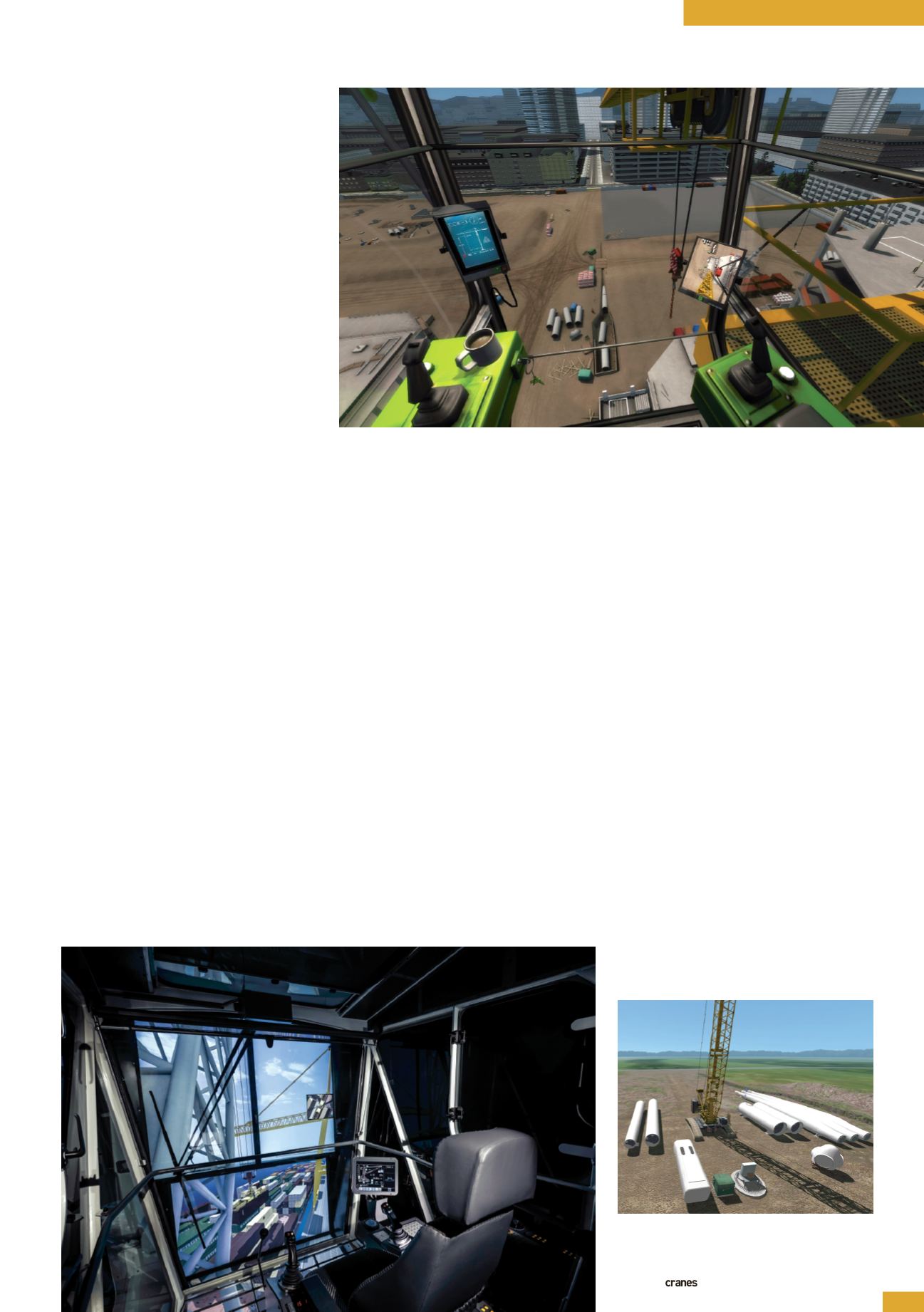
45
INTERNATIONAL AND SPECIALIZED TRANSPORT
■
AUGUST 2013
OPERATOR TRAINING
I
n 1982 training for mobile and tower
crane operators was made mandatory
in Canada by the Trades Qualification
and Apprenticeship Act (TQAA); before
this act operator training was not a
requirement. Harold McBride, executive
director at the Operating Engineers
Training Institute of Ontario, a crane
operator training organisation in Canada,
explains, “From 1969 to 1978 there were no
training requirements for crane operators
and, as a result, crane related fatalities
accounted for 19.8% of all construction
fatalities. From 1979 to 2004, after
credible training for crane operators was
established, that percentage dropped
to 8.8%.”
The connection between increased
training and reduced fatalities on
constructions sites was noted and training
providers and crane manufacturers around
Labs, manufacturer of Vortex Simulators,
says, “Teamwork cannot be taught in the
classroom but, with a simulated training
environment that incorporates multi-role-
playing [including lift planning, lifting and
reviewing], the operator, signalman and
rigger can all be trained together.”
Experienced operators can also benefit
from simulators, as Hans-Jörg Schwärzler,
marketing for maritime cranes at Liebherr-
Werk Nenzing in Austria explains, “A
major benefit of simulator training is the
ability to simulate harsh environmental
conditions, such as snowfall, heavy
winds, torrential rain and high waves. This
allows both experienced operators and
trainees to practice operating in
challenging conditions.”
John Alexander, global integrated
technical communications director at
Manitowoc Crane Care adds to this, “It is
important that people are re-evaluated to
ensure that they are capable of operating
the latest equipment. For example, someone
the world began offering training courses.
Over the years these courses developed to
include simulator training.
Simon Hogg, application consultant
at TenStar Simulation, a manufacturer of
training simulators for the construction
industry, explains why, “Learning to operate
a crane for the first time can be a daunting
prospect, as well as a costly exercise for
the training provider. Through simulator
training students learn terminology, control
familiarisation, hand eye co-ordination
skills and they can return to the simulators
and practice certain areas they may feel
weaker in. The most significant benefit
by far is that mistakes can be made on a
simulator, which is not an option on an
actual site.”
Simulators can also be used to train a
whole team, as Sebastien Loze, director
of marketing and partner sales at CM
As technology
progresses, crane
simulators are becoming
a popular choice for
operator training. LAURA
HATTON finds out more
A virtual world
>
Detail from the high resolution
screens inside a TenStar simulator
The look and feel
inside one of the
Liebherr simulators
is made to be as
realistic as possible
An example of a wind turbine simulator used by
the OETIO in Canada


